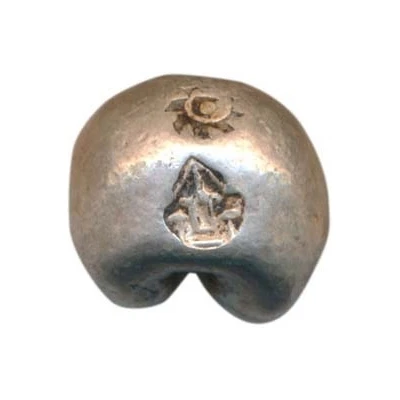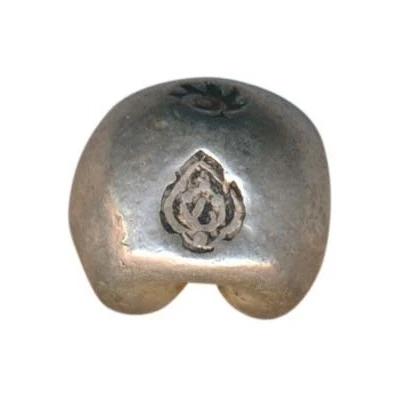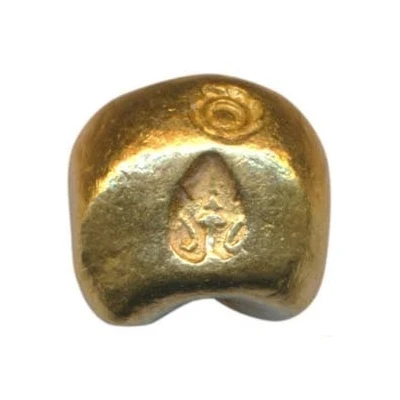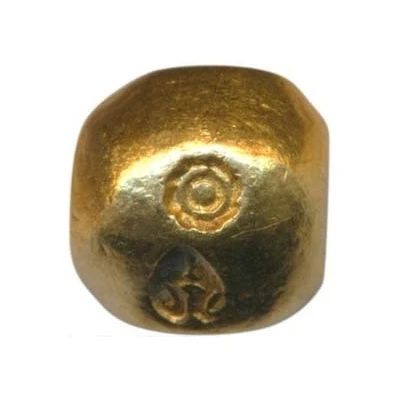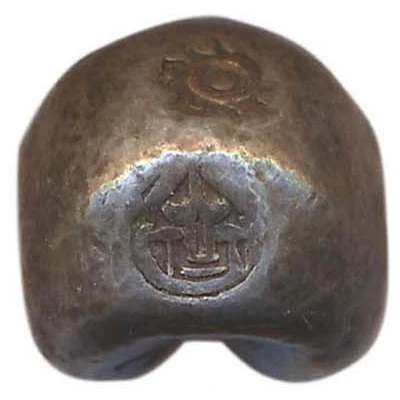
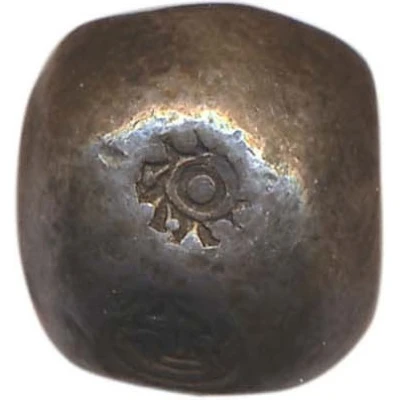

1 Baht - Rama III Prasat ND
| Silver | 15.4 g | - |
| Issuer | Thailand |
|---|---|
| King | Phra Nang Klao (Rama III / Nangklao) (1824-1851) |
| Type | Standard circulation coin |
| Years | 1824-1851 |
| Value | 1 Baht |
| Currency | Baht / Tical (1238-1869) |
| Composition | Silver |
| Weight | 15.4 g |
| Thickness | 14 mm |
| Shape | Other (Round bullet) |
| Technique | Hammered (bullet) |
| Demonetized | Yes |
| Updated | 2024-10-08 |
| Numista | N#33006 |
|---|---|
| Rarity index | 70% |
Reverse
8 dots in Chakra.
Comment
* Counterfeit exist *
The principal difference between genuine (top row) and modern counterfeit (bottom row) pot duang coins.
Prasat is the Sanskrit word for palace, and is used as the royal emblem of Rama III. The Prasat was the first mark used on the regular issued pot duang coinage, first appearing in 1824. It was used continuously throughout the reign of Rama III, and was also used on gold pot duang issued in connection with the Phra Chetupon Temple celebrations of 1848.
(Source: Siamese Coins, From Funan to the Fifth Reign; Ronachai Krisadaolarn & Vasilijs Mihailovs, River Books Co. 2012
Interesting fact
One interesting fact about the 1 Baht - Rama III (Prasat) ND (1824-1851) coin from Thailand is that it features a unique blend of traditional Thai and Western design elements. The obverse side of the coin depicts a portrait of King Rama III in a traditional Thai style, while the reverse side features a depiction of the temple of Prasat, a famous monument in Thailand, in a more Western-style architectural design. This blending of styles reflects the cultural exchange and influence that occurred between Thailand and Western nations during the 19th century.
Price
| Date | Mintage | VG | F | VF | XF | AU | UNC |
|---|---|---|---|---|---|---|---|
| ND (1824-1851) | - | - | - | - | - | - |
Values in the table are based on evaluations by sales realized on Internet platforms. They serve as an indication only for 1 Baht - Rama III (Prasat) ND (1824-1851) coin.
